So, you’ve got your initial design done, and now you want some changes made. What’s the best way to go about that? You may be tempted to ask for edits as soon as it comes to mind, but that isn’t always best. Editing too often will almost always delay a project and create additional stress you don’t need. The first thing you should do is discuss revisions and edits with your designer before you start? Good communication and setting up expectations on both sides is always the best first step to successful edits.
There is a lot to consider with edits and defining what an edit is can be a difficult thing, especially when not clearly defined and both sides have a different idea of what an edit is. We live in a world where some people are familiar with “unlimited edits”, like what people typically offer on platforms like Fiverr. While that can work for small projects that are cheap and expectations are low, it isn’t what will make sense for large or complex projects. At least it won’t work out for the designer typically, an no design firm with a reputation will offer unlimited edits.
I put this together to help you know what an edit is and when is best to make edits so the project can come to completion. This list should help clear things up a bit and help you when you are discussing edits with your product developer.
What is an Edit?
The dictionary defines an edit as “a change or correction made as a result of editing”. But what does it mean to you and your designer or developer? Changes are very common during the entire process of developing a product, business, or brand. Every project I’ve ever worked on has had a change made, at least once in every stage of development.
Changes are needed for many reasons ranging from discovered issues to an oversight to new input from something like customer feedback. At the Peterman Design Firm, we define an edit as a request from our client to make a change or adjustment to a current design. Of course, edits happen internally as well as we have our internal reviews before we present the design to our client.
When Should You Edit?

Making edits to a design should be done a specific points, unless there is an urgent need or discovery that impacts the project.
Ian Peterman, CEO Tweet
The short answer is at each review point. A good project plan has review points where the developer meets with you, the client, to review the project.
These points are usually defined by the developer, but if there is a specific point where you want to review, then you need to make sure your designer or developer knows this and can plan around your requirement.
These should be specified in your Timeline and your Project Scope.
Avoid Over-The-Shoulder Editing
The over-the-shoulder editing is something you should stay away from at all costs. It slows your developer down, costs more money, and does not allow your developer or designer to work most effectively. If you have a designer that needs constant guidance and being told what to do, then you should probably find another designer. Plus, any designer who knows what they are doing will not want to work with you if you are constantly telling them how to do their job.
Letting them work in their best way means they will be more creative and give you better results. I’ve known a few designers that could work with clients like this, however, most don’t do well with this. Personally, I dealt with it when I was a new designer and was looking to get input from anyone who knew more than me. However, I won’t work with clients who are constantly editing and telling me how to do my job. I’m not needed if the client knows better than me and it’ll save everyone time and effort. There are of course more than one way to annoy yourself and your designer, which I talk about in the post here.
How Should You Edit?
Ensure edits are done once through good communication between every involved person.
Ian Peterman, CEO Tweet
It really depends on the developer and both of your styles of communication which works best. For your own protection, and to make sure no edits are ever missed, red-lining drawings or presentations is the clearest and most effective method.

It’s why engineering teams use red-lining exclusively when editing designs. I like to send a digital presentation or drawing set for our clients to review. This allows them to red-line it and send it back to review their edits if needed.
You Will Almost Always Need Edits
Having edits in writing protects you as the client. If an edit is missed, you can catch it and make sure your developer completes the edit before moving on. What is even better is having drawings with edits so you can visually see where and what the edit is. This is especially true when you get into having something production ready. Not only will drawing edits give you a reference, it’ll allow you to also quality check the manufacturer once you are in production.
Documenting changes you want to happen gives you and your designer a reference to make sure you have talked with them about everything you wanted changed and avoids missing things.
During my 15+ year career developing products for many different industries and customers, I’ve had two designs go to prototype without needing an edit. After the prototype though they needed some edits. I’ve never had a product go to market without at least a few edits along with way. I’ve worked with hundreds of companies and designed and developed thousands of individual parts. Edits and revisions are a part of the process.
Use edits to your advantage, they are like reset buttons. Each time you go through a review, it gives you the opportunity to adjust the course of your product and make sure it hits the mark. It’s like making course adjustments instead of waiting till you already missed the destination.
Every time you review and make changes, think of it as an opportunity. You will be able to find flaws in the design and prevent future issues from arising before they become a real problem. This saves time and costs in the long run. Edits are a tool, use them as such.
And if you are looking for the definition of edit, here is Merriam-Websters definition.
Your Next Steps
Related Conscious Design BLOG Posts
The 4 Things Your Scope of Work Should Have
Every project that involves more than one person should have a scope of work, or SOW. Even very small projects benefit from having one. A good scope of work is a tool that will provide the designer, client, and anyone else involved with a clear vision of what is and should be done and how.
Project Timeline: 3 Things You Need To Have When Creating One
If you and your designer have these three items, then a viable timeline can be created by the designer.
2 Tools you Should use with Your Developer
When working with a product developer, there are two types of programs you should be familiar with. While there are many options for each one,


